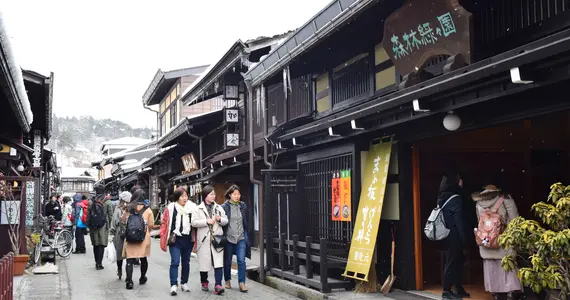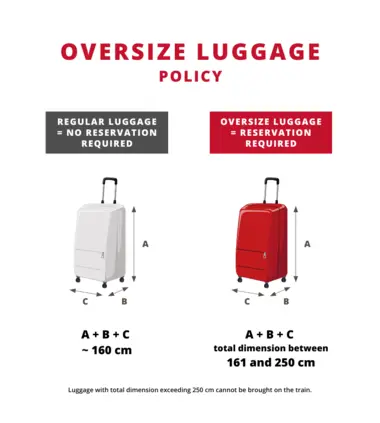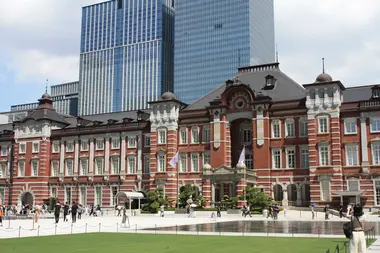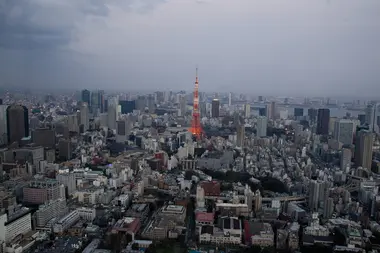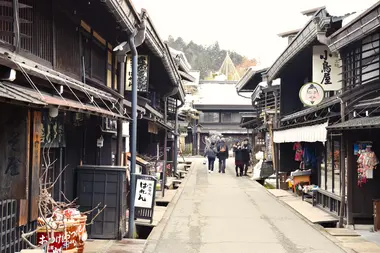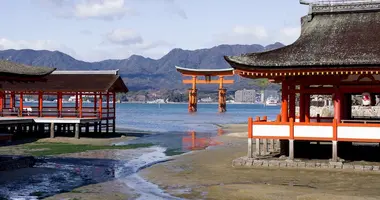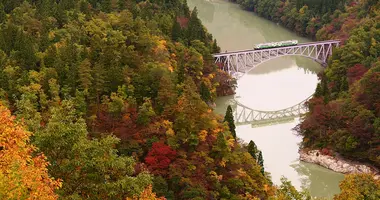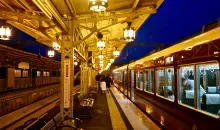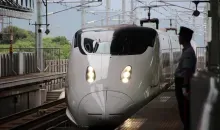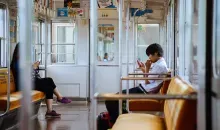How to get from Tokyo to Takayama
Though both Tokyo and Takayama exist in central Honshu, they represent very different parts of Japan, the former a major metropolitan city home to more than 12 million people and the latter a charming escape within the mountains.
How to get from Tokyo to Takayama via train
Takayama Station
Though both Tokyo and Takayama exist in central Honshu, they represent very different parts of Japan, the former a major metropolitan city home to more than 12 million people and the latter a charming escape within the mountains.
Getting from Tokyo to Takayama entails taking the Tokaido-Sanyo Shinkansen bullet train to Nagoya in Aichi Prefecture, then taking the Hida Limited Express to Takayama Station in Gifu Prefecture. Around 520 kilometers are covered in total during this trip and costs around 14,800 Japanese yen. Departures from Tokyo out to Takayama start at 6:00 AM, with the final departure at 9:04 PM.
Shinkansen bullet trains available on this itinerary:
| Nozomi Shinkansen Bullet Train | Mizuho Shinkansen Bullet Train | Hikari Shinkansen Bullet Train | Kodama Shinkansen Bullet Train |
*NOTE: All Shinkansen bullet trains on the Tokaido-Sanyo Line are accessible with the Japan Rail Pass; however, an additional fee of 4,180 yen is required to ride the Nozomi and Mizuho trains from Tokyo to Nagoya.
FROM NAGOYA, THERE IS A TRANSFER OUT TO TAKAYAMA STATION VIA THE HIDA EXPRESS TRAIN
Reserve tickets from Tokyo to Takayama!
Reserving seats on the Shinkansen
On Shinkansen bullet trains, individual ticket holders and Japan Rail Pass holders can reserve seats in advance of boarding. Reservations are typically not required for Shinkansen bullet trains because they frequently have non-reserved cars with seats available on a first-come, first-served basis. These are often the car numbers 1-4.
On certain trains, reservations are required for every car. However, it is highly recommended that all travelers try to book tickets during the busiest travel seasons in Japan, which are the spring and the New Year's holiday. When buying a single ticket, a reserved seat costs extra, but Japan Rail Pass holders are free of this charge.
Oversized Baggage on the Shinkansen
There are several standards that must be fulfilled in order for passengers who have bulky baggage to board the bullet train. As mandated by Japan Railway, luggage over 160 cm in total length, width, and height must be checked into the special large baggage area at the rear of the train car. Owners of such luggage are also required to book seats close to this area. Please take note that no luggage over 250 cm in total size is permitted on the Shinkansen.
Baby carriages, musical instruments in cases, and sports equipment (bikes, snowboards, etc.) in cases are among the items that are exempt from these luggage regulations.
Exploring Tokyo
The modern-day capital of Japan was once known as Edo prior to the Meiji Restoration. It is currently the largest city in the world in terms of population and has a rich and varied culture that is representative of that. With hustle and bustle in its more central destinations and more sleepy, relaxed neighborhoods scattered around, there is something for everyone in this metropolitan center.
Lovers of anime and Japanese pop culture will find a second home in Akihabara and Nakano. Those looking for a night out on the town will find constant entertainment in Roppongi. Trendy neighborhoods like Kichijoji and Shimokitazawa will give a peek into what the hip folk of Tokyo are into, and those wanting a day to treat themselves to luxury shopping and dining will undoubtedly need to visit Ginza and Higashi Azabu.
One of Tokyo’s biggest draws is its extensive public transportation network, which will allow travelers to navigate around the city with ease. This is especially for holders of the Japan Rail Pass, who will have unlimited access to the JR Lines within and departing from Tokyo. Tokyo Station, Shinagawa Station, and Ueno Station serve as Shinkansen Bullet Train stops.
To get to Takayama from Tokyo, the Shinkansen bullet train is ridden from either Tokyo Station or Shinagawa Station (both in central Tokyo and both on the JR Yamanote Line) out to Nagoya Station in Aichi Prefecture, where a transfer to an express line out to Takayama will be made.
The surroundings of Tokyo Station are largely commercial, consisting of upscale, elegant shopping districts and department stores, restaurants that range from quick-eats to fine-dining, and tranquil parks such as Hibiya Park and the Imperial Palace Park. Within the station exists an extensive network of more shops and restaurants, as well as a few department stores.
Shinagawa Station exists in a more business-centric district with a number of affordable, fast-casual dining-oriented restaurants in the area to cater to office workers. However, there are a number of attractions that visitors or those waiting to board their departing Shinkansens can entertain themselves with, including the Maxell Aqua Park and Nikon Camera Museum.
Exploring Takayama
Takayama is located in Gifu Prefecture, one of the very few landlocked prefectures within the archipelago of Japan. What it lacks in coastal areas, it makes up for in other natural attractions, blessed with rolling mountains and rich valleys with pristine rivers flowing through them. The quaint area of Takayama is the perfect locale to see the richness of Japanese nature and the countryside that is often only seen by westerners through film and television.
One of the main attractions in this area is Shirakawago, a small village consisting of traditionally built, thatch-roofed homes and buildings. Despite being a historic UNESCO heritage site, this is actually an area with a fair amount of residents, giving the town an authentic and lively environment. On the sides of the roads and sidewalks, small canals are filled with pristine water and have koifish living in them.
The town of Hida is not far from Shirakawago and is a small town with modest charm. The Furukawa River flows through the center of town, with small shops and restaurants scattered throughout. One of Takayama’s most recognized calling cards is that of the award-winning Wagyu beef that is sourced from the region. Dishes featuring the luxuriously marbled meat can be found everywhere, some even being Michelin-starred. Additionally, cafes built out of traditional Japanese homes can be found alongside long-standing sake breweries and soy sauce producers.
For fans of anime, Hida-Furukawa Station is an essential visit, as both it and the surrounding area were heavily featured in the 2016 smash hit “Your Name” by Makoto Shinkai.
A charming getaway in northern Gifu Prefecture rests amongst mountains and lush forests. With a number of towns with modest streets adorned with small shops and restaurants, its a fantastic escape for travelers to relax and see life in the countryside of Japan.
Takayama is a bit out of the way from Tokyo but is well worth the trip. It is most conveniently accessed via the Shinkansen out to Nagoya, then a transfer onto the Hida Limited Express. The Hida Limited Express Train will provide direct access to Hida Takayama. Being in the Japanese countryside, a few of the towns in Takayama, such as Furukawa, Hida, and Shirakawago, have a bit of distance between them, but buses and other forms of transportation are available.
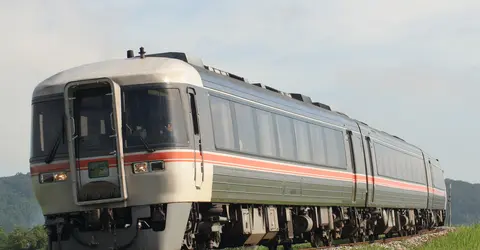
Hida Limited Express
@Wikimedia
From the big city to the countryside
Two strikingly different yet definitively Japanese destinations, a trip between Tokyo and Takayama is guaranteed to deliver a very authentic experience for travelers wanting to see what Japan truly has to offer. Take in the charm and friendly faces of both spots, but move a bit more inland from Tokyo into Gifu, and the towering skyscrapers slowly become replaced with mountain ranges. Your all-encompassing trip is made easy with both the Shinkansen bullet train and the Hida Express Limited Express Train!

